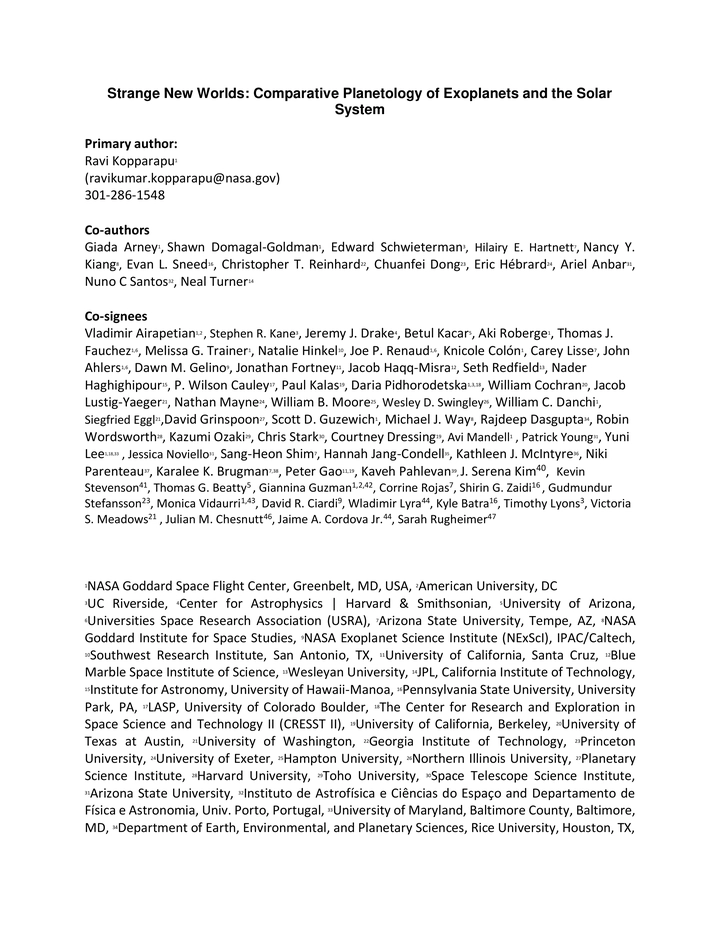
Abstract
This whitepaper discusses the striking diversity of exoplanets that could be detected by future observations and highlights the potential for comparative planetology to be performed with Solar System planets in the upcoming era of large, space-based flagship missions. The primary science focus will be on characterizing Earth-like worlds around Sun-like stars. However, we will simultaneously characterize companion planets. This characterization effort will not only provide a contextual picture with regard to our Solar System, but also presents a unique opportunity to observe correlations between atmospheric composition, planetary size, orbital distance, etc. Whether they orbit our Sun or another star, planets are planets. The field of ‘planetary science’ should embrace a unified approach to the study of planets in which questions and insights from exoplanets and from objects in our Solar System flow seamlessly. To that end, we recommend (1) continued support of community-wide cross-disciplinary efforts that promote communication and collaborative venues for scientists in both the fields and (2) dedicated effort to apply the modeling techniques (“lessons-learned”) of the Solar system objects to exoplanet parameter regime, to predict observables.